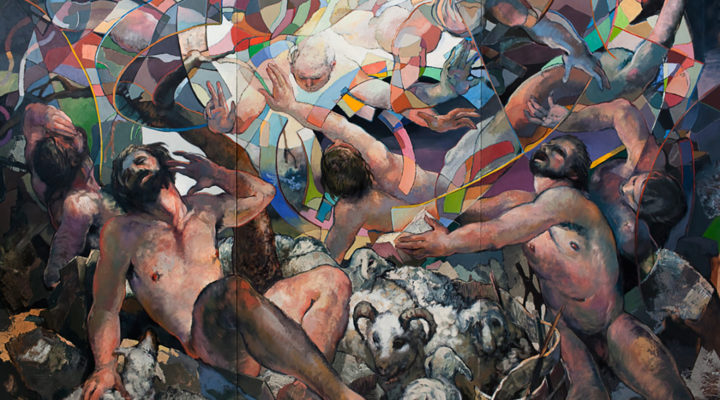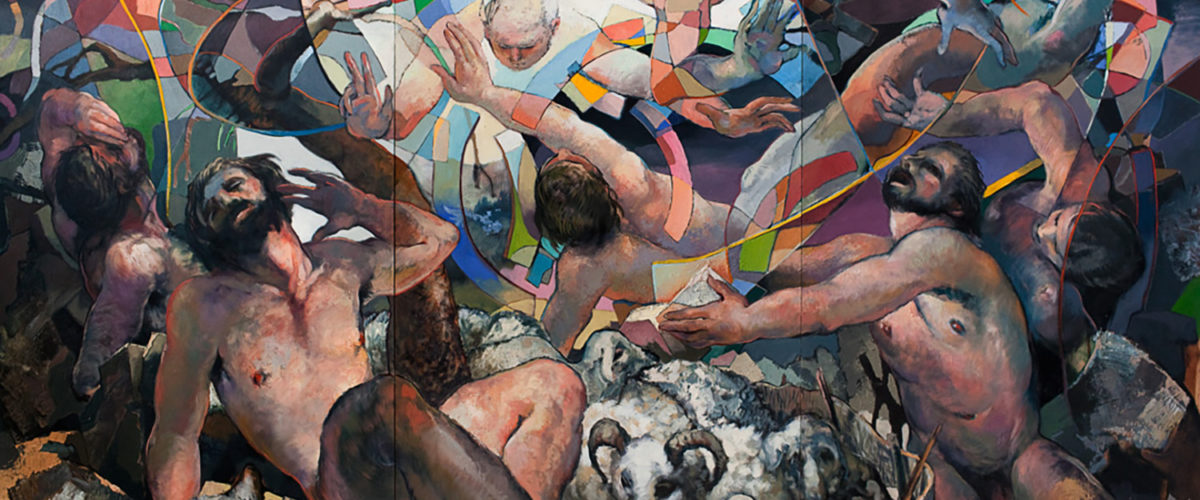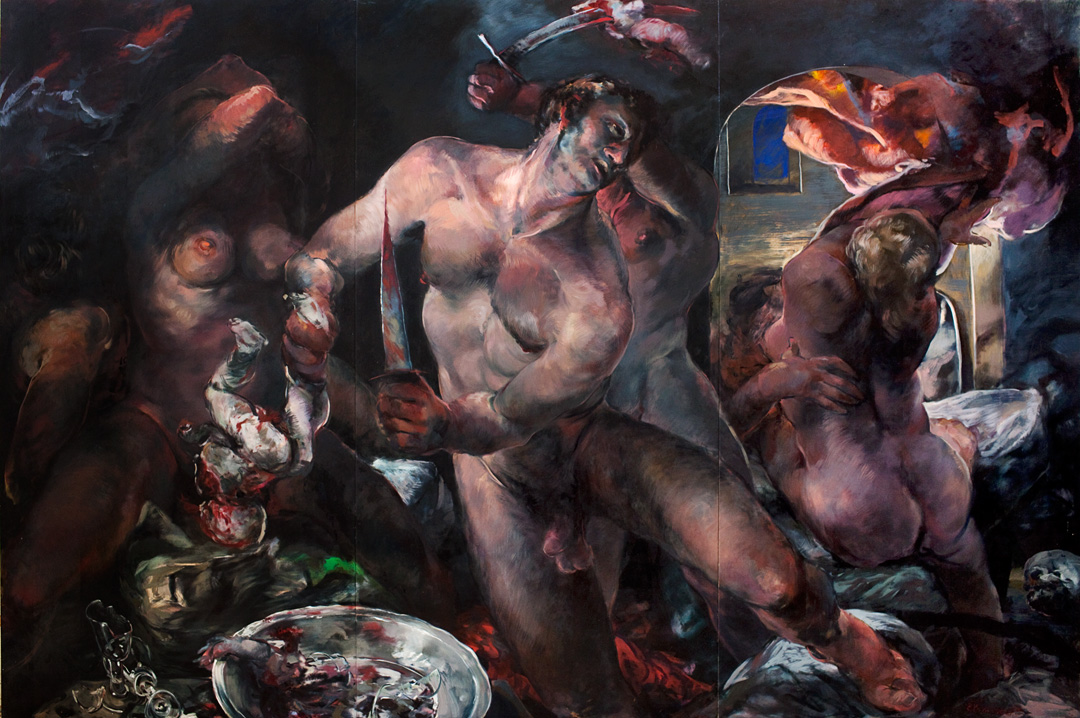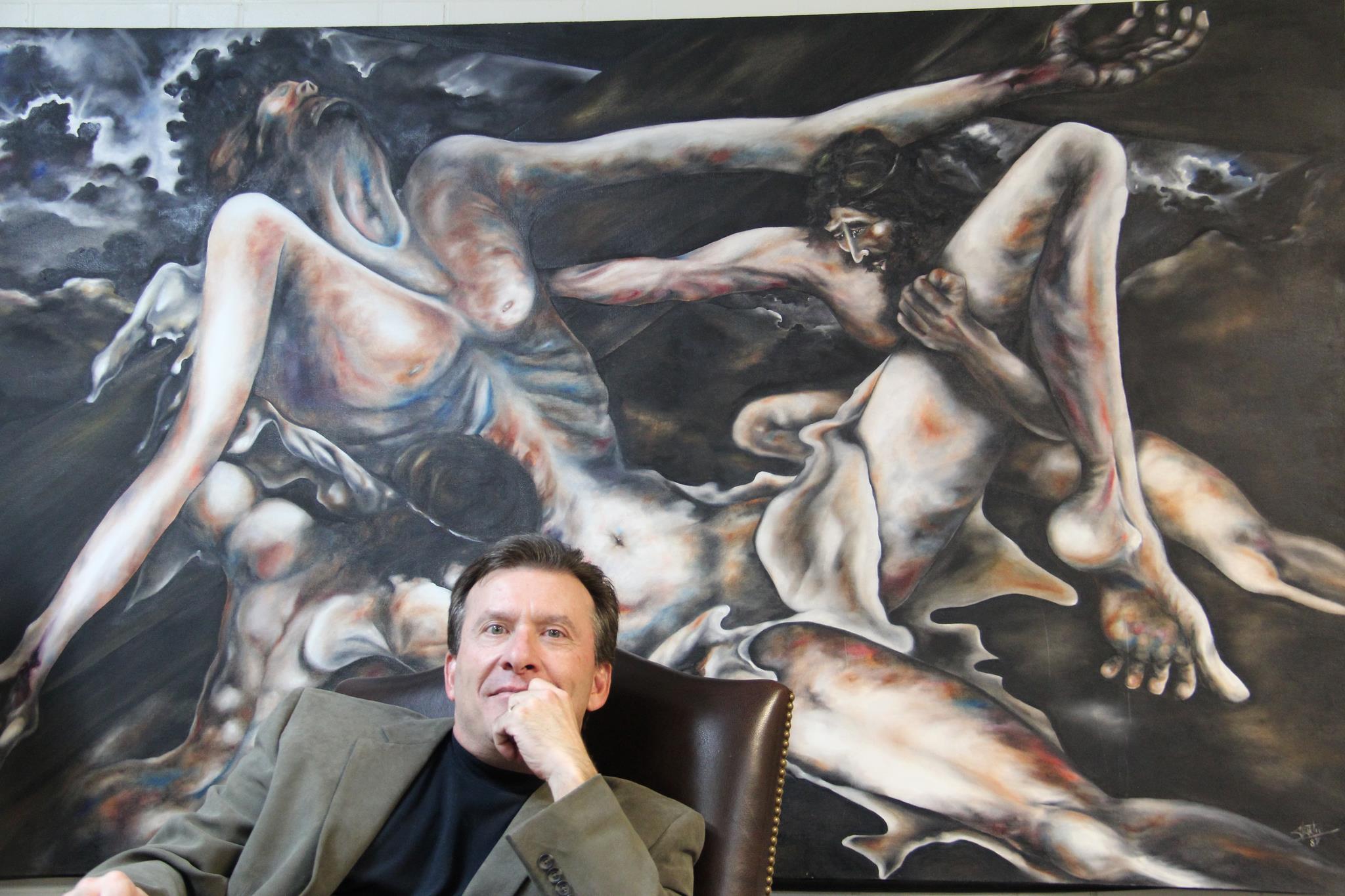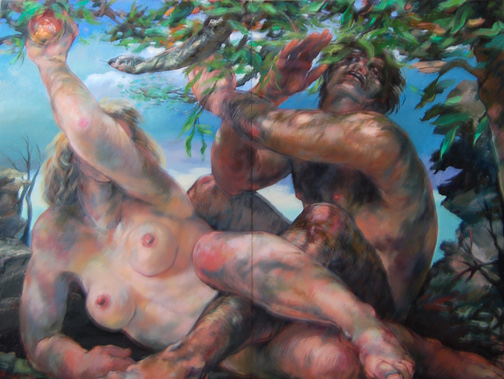When Convergence, a congregation with Baptist ties in Alexandria, Va., hosted Edward Knippers’ massive paintings in an exhibition called “Violent Grace,” it had to cover the works during worship services of the Anglican congregation that shares its space.
Why? Not because of the violence portrayed in the biblical stories — the death, torment, crucifixion and slaughter — but because the characters in Knippers’ dramatic depictions typically are nude, whether viewed from front or back.
During an exhibit preview Convergence pastor and artistic director Lisa Cole Smith said the Anglican pastor cited children to explain his reluctance to have the works on display.
“He kept saying to me, ‘I’m sure you understand. You wouldn’t want to have this conversation with your children,’” Smith said. “I kept coming back to say, ‘No, I do want to have this conversation and to create a space where it’s safe to have this conversation.”
Knippers’ paintings command the room on canvasses 9 by 12 feet, with brilliant colors and arresting scenes in which fully gendered bodies are bent and bowed. They express the humanness of Christ and the “embodied factor of the Christian faith,” according to Smith, who curated the show.
When Jonah is spit from the fish or babies are ripped from their mothers’ arms in the Massacre of the Innocents, the violence and blood of the acts is not sanitized with a covering of clothing.
Knippers’ work in the exhibition, which closed July 22, “digs into the reality of human existence,” Smith said. “It deals with God and man facing the reality of evil. … The refracted light of later works represents the spirit of God breaking into the physical realm and the destruction that causes. The nudity and violence is just portraying stories in the Bible. People tend to forget the real violence in the Bible.”
“We’re not willing to be naked before our own issues.”
The raw power and drama of the works prompt self-examination, a basic premise of art and a discipline most Christians ignore, according to Stephen Martin, an artist and pastor of First Baptist Church in Kernersville, N.C. Martin was an artist in Austin, Texas, before pursuing training for the pastorate. His doctoral thesis at Drew University examined art in the church.
“Self-examination gets more uncomfortable the more we expose,” Martin said. “The more we talk, the more we reveal, the more we see. But we have built-in, innate sensors that keep us from seeing who we are.”
He said that censorship prevails in churches when we “gloss over issues, in essence clothing the problem. We have a great heritage of covering up that which we do not want to expose.
“We’re not willing to be naked before our own issues.”
Sexualized culture
American culture is highly sexualized in part, Smith said, because Christians do not contribute to the culture as much as they react to it.
Culture influences church “because our responses are usually against something, rather than creating and throwing something into the stream,” Smith said.
That extends to sex education that simply says “don’t” instead of offering a “healthy image of what it looks to be human” and that sexuality is “good and natural and here’s how we express that in a healthy way.”
Americans are “prudish about bodies, but obsessed with them,” treating people in “almost a dehumanizing way, like a commodity,” Smith said. When we cover art with sheets and cloak discussions of humanness with titters and blushes we promote “shame connected with bodies,” and the eating disorders and social media bullying that result.
“We as Christians are the body of Christ, so how we look at our bodies makes a difference,” Smith said.
Martin had every intention of incorporating his early arts background with ministry. He started an arts academy in the rural setting of his first pastorate because arts and music were not encouraged in the local high school. Some 80 people enrolled, from ages 8 to 84.
He integrated art into corporate worship, often utilizing the newly released talents of his academy students. He has not been able to replicate that success in succeeding locations.
“Visual dialog is not a part of Baptist expression,” Martin said. It frustrates both the artist and the pastor in him, because “art and theology dance together in wonderful expression,” and “cultural relevancy impacts theological reflection.”
“It’s no wonder the artists are no longer in church, no wonder they run to the hills,” Martin said. “Artists are about revealing, exposing, examining. That demands pushing the envelope, showing nudity, showing anger, frustration.”
Instead, Smith said, “lack of critical thinking” prompts us either to “shut things out or absorb it completely, as opposed to creating space to have a difficult conversation.”
Failure to engage the culture and provide safe space for these conversations leads to “very disturbing messages about the body in our culture.” Smith said. Nudity itself is not sexual, but failure to discuss leads to breastfeeding mothers being accosted in public. “And it’s totally natural. People dismiss things outright out of fear.”
“We have bodies our entire lives. We rely on them,” Smith said. “Shouldn’t that be a part of what we talk about?”

